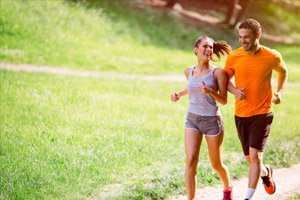
All iLive content is medically reviewed or fact checked to ensure as much factual accuracy as possible.
We have strict sourcing guidelines and only link to reputable media sites, academic research institutions and, whenever possible, medically peer reviewed studies. Note that the numbers in parentheses ([1], [2], etc.) are clickable links to these studies.
If you feel that any of our content is inaccurate, out-of-date, or otherwise questionable, please select it and press Ctrl + Enter.
Physical activity in nature is more beneficial than other types of exercise
Last reviewed: 02.07.2025
 ">
">In a recent review article published in the American Journal of Lifestyle Medicine, researchers examined the benefits of physical activity in natural settings (PANS) and strategies to promote it. Their findings suggest that while there is a strong evidence base to support PANS, further research is needed to address gaps and fully understand the role of health care professionals in promoting this behavior.
Regular physical activity provides numerous health benefits, such as preventing chronic diseases, improving immune function, enhancing mental health, and increasing life expectancy.
A growing body of evidence suggests that spending time in nature provides additional health benefits, including improved cognitive function, mood, and immune response.
Despite well-established guidelines that advise adults to engage in 150-300 minutes of moderate or 75-150 minutes of vigorous activity weekly, many people remain inactive, and less than a quarter meet both recommendations for aerobic and muscular activity.
Benefits of PANS over other physical activities
Physical activity can occur in natural or non-natural settings, such as a walk in the woods versus a walk through a shopping mall. While exercise science measures activity by time and intensity, nature exposure studies control activity levels to test environmental effects.
The concept of "green exercise" suggests that PANS provides additional benefits. Studies comparing PANS with indoor exercise show some benefits in cognitive function, mood, social interaction, and enjoyment.
However, systematic reviews show that studies are varied, often of poor quality, and the results are mixed. Although PANS shows potential for superiority in short-term benefits, strong evidence of long-term outcomes is lacking.
Nature Connection and Mental Health
The concept of nature connection is important for optimizing mental health through PANS. Nature connection refers to the extent to which a person identifies with and feels connected to nature.
Research shows that people with a high connection to nature experience greater well-being, decreased anxiety, and increased life satisfaction when participating in PANS. For example, one study found that physically active adults with a strong connection to nature reported higher levels of eudaimonic well-being.
Promoting connections to nature through childhood experiences, education, and biophilic environments can improve mental health through PANS.
Factors Affecting PANS
PANS can be an effective way to encourage physical activity, as people often prefer open spaces. Research shows that people who regularly visit green spaces are more likely to meet recommended levels of physical activity.
Factors that influence increases in visitation to natural areas include accessibility, cost, and physical characteristics of parks and trails, such as amenities and maintenance. Due to land ownership, urban areas may have better access to parks than rural areas.
Programming, public participation, and a sense of community also increase attendance. Individual and social factors such as a sense of safety and personal relationship with nature play an important role.
Promoting PANS to Maximize Health Benefits
Promoting physical activity in natural settings involves more than just increasing park space; infrastructure and amenities such as sports fields, playgrounds, paths and natural features increase park use.
Interventions such as installing playgrounds, providing safe access, and renovating parks are effective, although the quality of research varies. Even small urban parks can stimulate activity by encouraging walking. Shade provided by trees or structures is especially important in the context of climate change.
Neighborhood context and organized activities such as yoga classes or sports leagues also encourage park use. Green schoolyards and community gardens are special places that encourage physical activity, which is especially beneficial for children’s health and reduces sedentary time.
However, demographic factors influence park use, with differences by gender and ethnic groups. Comprehensive strategies that combine infrastructure improvements and structured programming are most effective in promoting physical activity in natural settings.
Advancing PANS must take into account the barriers faced by priority populations, such as Black, Indigenous, People of Colour (BIPOC) and immigrant communities, who face discrimination and inequalities in access to quality green spaces.
PANS is a powerful strategy for increasing physical activity and contact with nature. Promoting PANS offers significant health benefits, but long-term research is needed.
Factors such as accessibility, physical features, neighborhood context, and programming influence time spent in PANS and level of physical activity.
Barriers for BIPOC communities, children, seniors, and people with disabilities must be considered. Health care providers can support PANS through appointments, behavioral models, and community programs.
